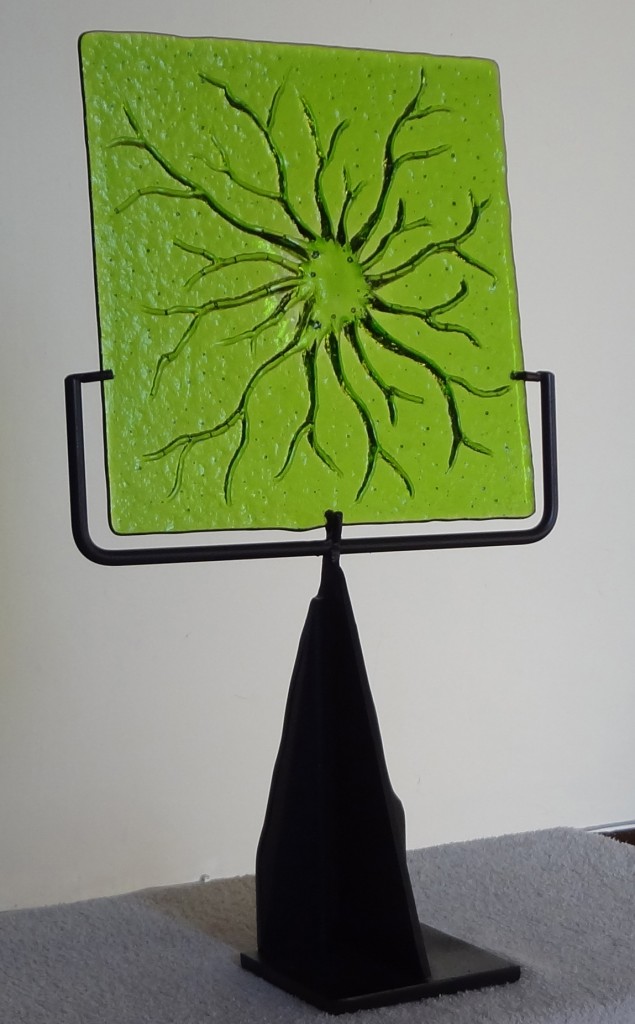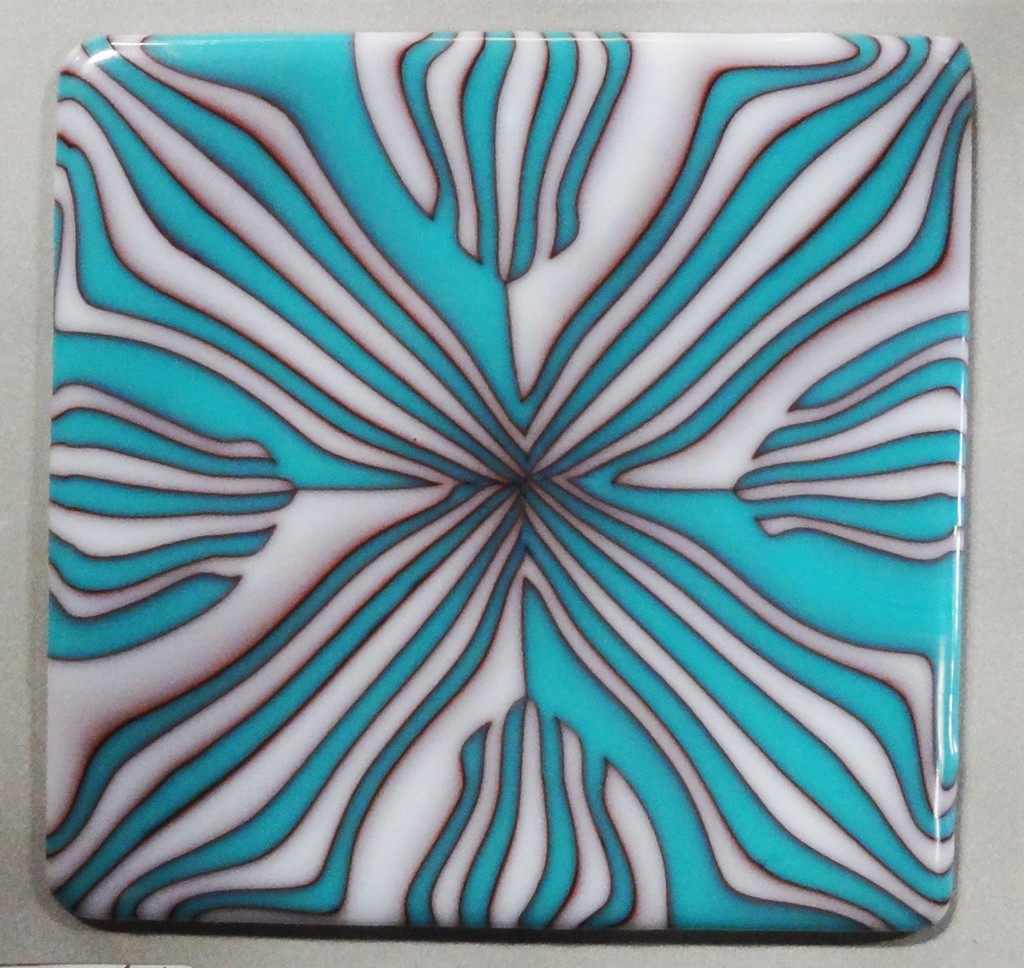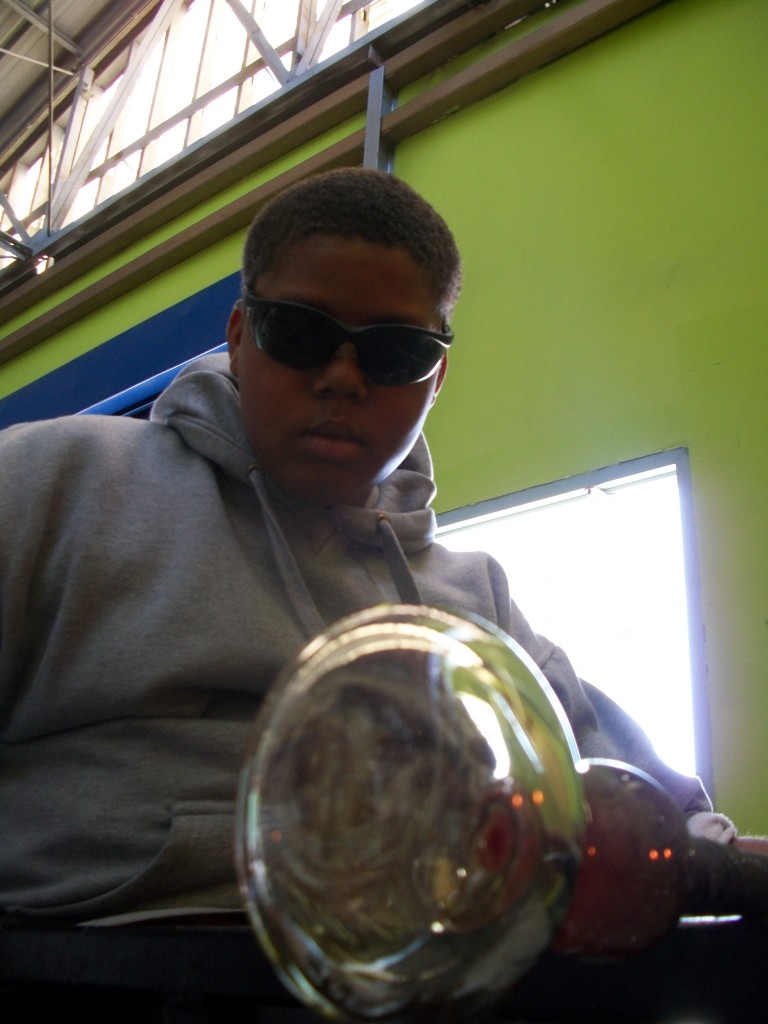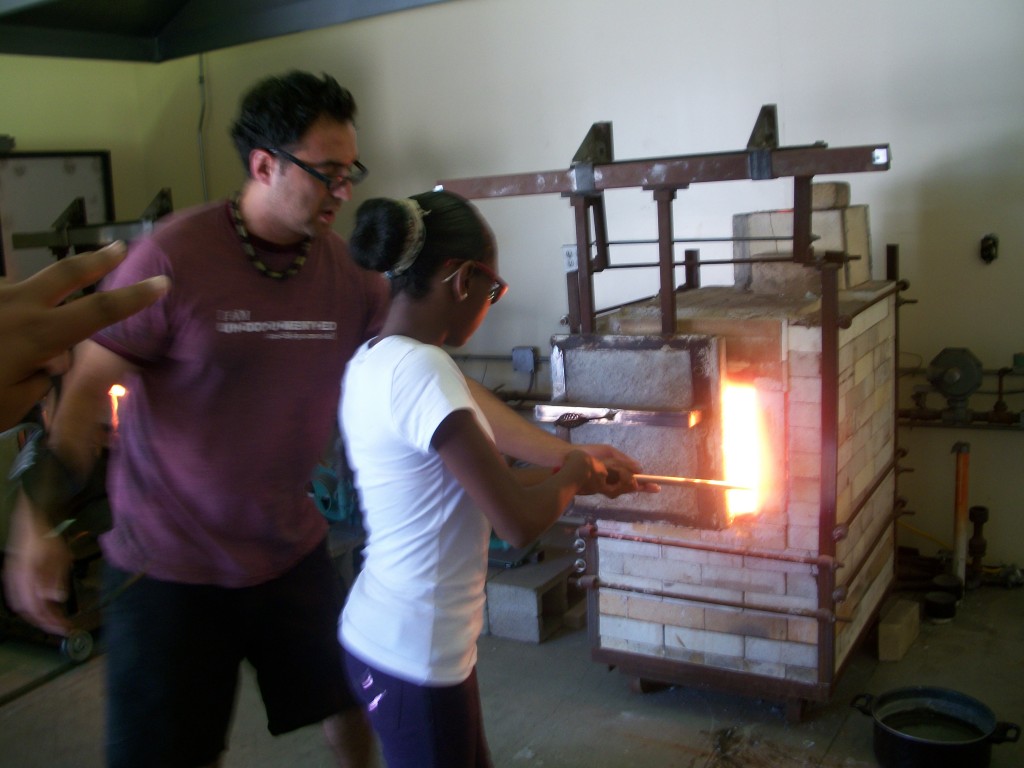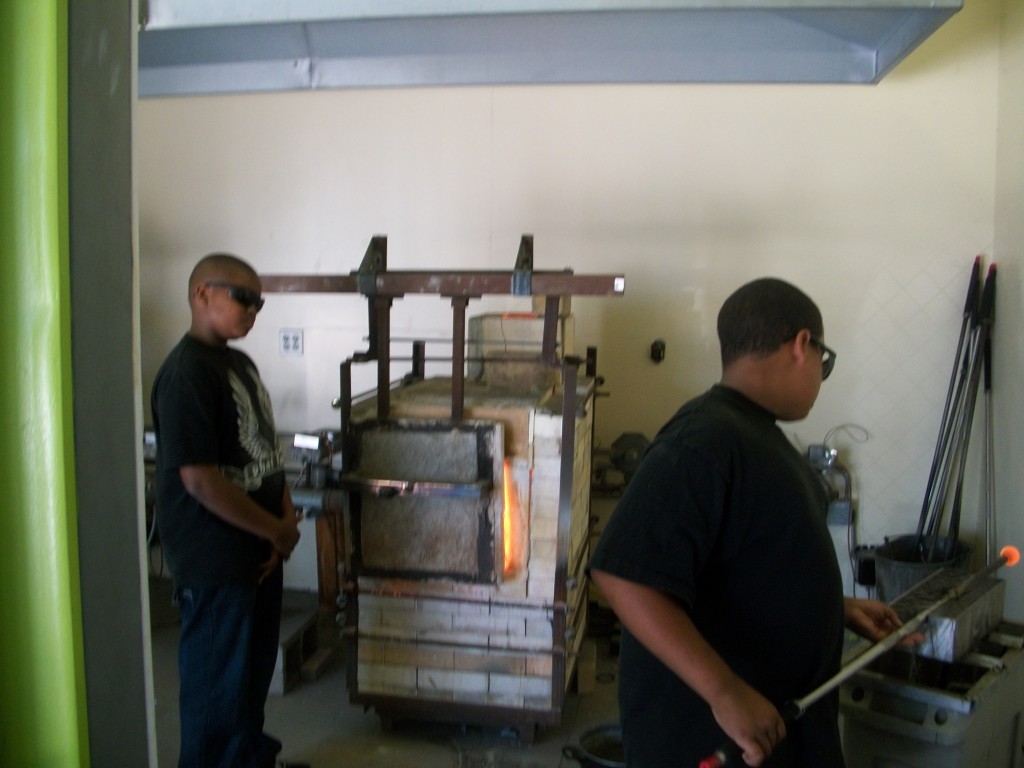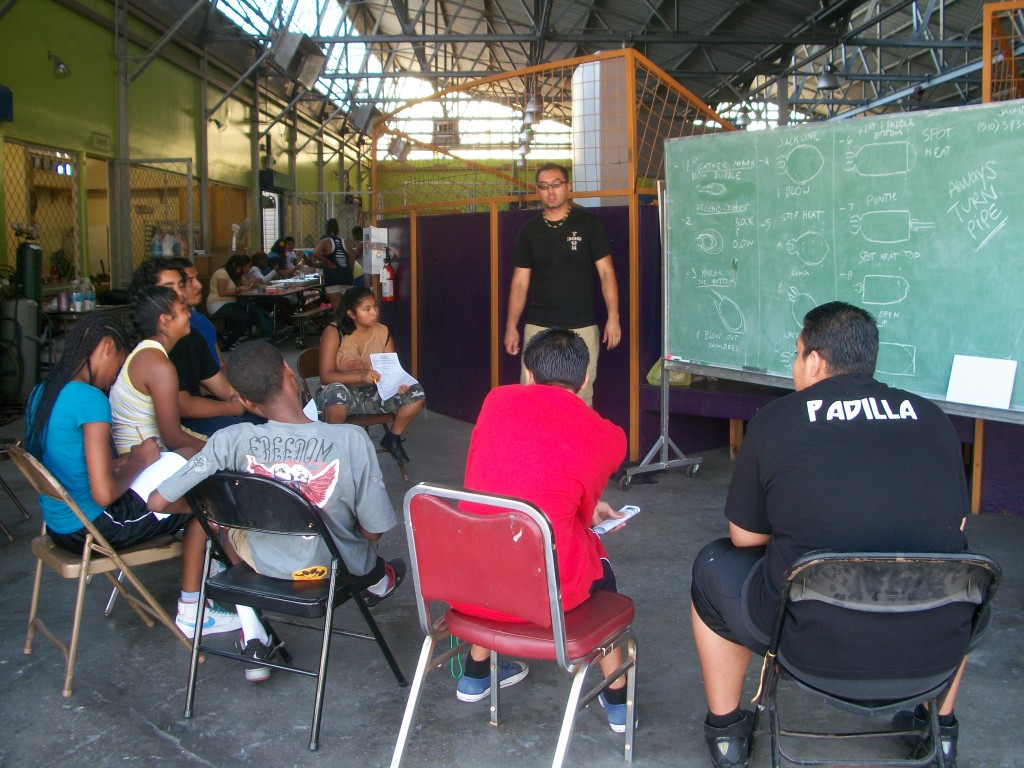As part of the national celebration of 50 years of studio glass, we honor the artists who were central to the development of new techniques, teaching art students about glass and creating a focus on the glass arts in California. This article is the beginning of a living time-line of glass studio artists in California.
We encourage artists to bringing studio photos and bios to add to the timeline being created at the symposium. In addition, we are creating a “Directory of California Glass Artists” on our website. We welcome glass artists of all decades who have worked in California to fill out an information form with a bio and photos of your work to include in the Directory. See the Studio Artists Menu on this website.
1962 Clayton Bailey
Clayton is part of the historic Toledo glass workshop as one of Harvey Littleton’s students (see William Warmus’s article Blue Jeans to Black Tie, 50 Years of Studio Glass). Clayton later becomes a well known California ceramic sculptor and educator. www.claytonbailey.com
1962 Edris Eckhardt
UC Berkeley hires sculptor Edris Eckhardt to teach a glass casting course, the first California glass class in a school of higher education. http://en.wikipedia.org/wiki/Edris_Eckhardt
Fall 1964 Marvin Lipofsky
Harvey Littleton’s student Marvin Lipofsky is hired to start a glass program at UC Berkeley. www.marvinlipofsky.com
Fall 1964 Dr. Robert Fritz
Harvey Littleton’s student, Dr. Robert Fritz starts a glass program in at San Jose State University School of Art and Design. Dr. Fritz was already teaching ceramics at SJSU but had been researching glass processes since 1960. http://en.wikipedia.org/wiki/Robert_C._Fritz
1965-69 Dick Marquis
Dick Marquis studies with Peter Voulkos, Jim Melchert, Ron Nagle, Robert Hudson, Ed Rossbach and Marvin Lipofsky to learn everything about everything. He makes the Lord’s Prayer out of glass murrini and is the first American to work in a Murano glass factory. www.richardmarquis.com
1965-1967 Boyce Lundstrom
Boyce Lundstrom enrolled in glass program at SJSU with Dr. Robert Fritz. Boyce Lundstrom graduates from SJSU in1967, operates glass studio in southern California for two years and becomes co-founder of Bullseye Glass. www.boycelundstrom.com
Summer 1967 Marvin LipofskyMarvin started the California College of the Arts Glass program.
1968 California College of the Arts
LIpofsky, at CCA, starts a tradition of Great California Glass Symposiums. (The California Contributions: 50 Years of Studio Glass symposium is part of this tradition.)
1968 John Burton – Suellen Fowler
Pepperdine University initiates classes taught by glass pioneer John Burton.
Suellen Fowler is one of his first students and continued to pioneer coloration of borosilicate glass. www.FlameworkGlass.com
1968 Peter Mollica
Peter and his wife moved to California and set up his studio making commissioned and non-commission stained glass. With the help of writer Norm Fogel and photographer Charles Frizzell he authored and published STAINED GLASS PRIMER: a handbook of stained glass technique in 1971. In 1972, they produced STAINED GLASS PRIMER, VOL.2: advanced techniques and annotated bibliography in 1977. In 1981 Peter published a Japanese language edition of STAINED GLASS PRIMER. www.petermollica.com
1969 Dick Marquis
Dick receives his BA UC Berkeley.
1969 Ruth Tamura
Ruth is first person to receive MA in Glass from CCA. She teaches glass courses while Marvin Lipofsky is away.
1969 John Lewis
In the late 60’s, Professor Marvin Lipofsky introduces John, a graduate student in architecture at the University of California at Berkeley, to blown glass. Lewis opens his art glass studio in 1969, the first private studio in the Bay Area. A little more than a decade later, a $15,000 National Endowment of the Arts grant allows him the freedom to begin exploring other methods of working with glass including cast glass. He builds overhead glass casting facility. www.johnlewisglass.com
1969 Dan Fenton
Dan establishes his own stained glass studio in 1969. He has been described as a “walking-talking encyclopedia” for art glass techniques. A pioneer in the field, he combines slumping, fusing, cutting and reassembling, and painting to come up with unique designs and color compositions in a non-traditional style.
Dan teaches classes and workshops worldwide, and has written many articles and books. Pâte de Verre and Kiln Casting of Glass In Dan’s own words, “You will have at your fingertips the wealth of technical knowledge that can only come from years of experimentation and experience.” www.danfenton.net
1969 Dick Marquis Awarded Fullbright-Hayes Fellowship to Italy
Dan lives in Venice and works at Venini Fabbrica in Murano becoming one of the first Americans to every work in a Venetian glass factory.
1970 Dick Marquis
Dick brings back murini glass techniques and makes intricate lord prayer on a glass murine.
1970 Mark Peiser
Mark had an epiphany during Marvin Lipofsky’s 3rd “Great California Glass Symposium,” held at both University of California – Berkeley and California College of Arts and Crafts (CCAC) in Oakland, following the 1970 Oakland NCECA Conference. While talking with West Coast glassblowers in the living room of Jim Wayne (a San Jose State Bay Area glassblower with a backyard furnace), Mark realized that we each thought the “real action” took place on the other coast from where we lived. Hit by this grass-is-greener syndrome, well all agreed with Mark’s suggestion to try and gather regularly to exchange information. This idea, a verbalization of our desire to help each other, became the incentive for developing a community with mutual interests. The bonding of artists to help each other is still virtually absent in disciplines like painting, printmaking, jewelry, etc. My non-glass friends are jealous of the camaraderie that I continue to share with my glass buddies.”
http://www.glassart.org/_The_First_Decade.html
1973 GCGS Erik Hoglund
1974 Bullseye Glass
Bullseye Glass is the first new glass manufacturer to produce opal sheet glass since 1900. www.bullseyeglass.com
SJSU glass student Boyce Lundstrom is one of the three original partners who founded Bullseye Glass. Boyce Lundstrom and fellow Bullseye co-owner are known to many kiln-glass artists as authors of the landmark Kiln Firing Glass: Glass Fusing Book One. Boyce Lundstom is the author of Advanced Fusing Techniques (Glass Fusing, Book 2) and Glass Casting and Mold Making (Glass Fusing, Book 3).
1978 Glass Art Society meeting at Asilomar
The 2012 California Glass Exchange, California Contributions: 50 years of Studio Glass at the Crucible will feature and honor some of these early artists. www.glassart.org
By the mid 1970s: Glass Programs Were Thriving!
San Francisco State University
College of Marin
CSU Fresno
CSU Chico
Santa Monica College
Palomar College
CSU Fullerton
In 1980s Cal Poly started it’s glass program
1982-86 Susan Stinsmuehlen-Amend
Susan is a past board member of the Glass Art Society (1982-86) and an Honorary Life Member, served as the first woman president of the GAS. www.facebook.com/susan.stinsmuehlenamend
1985 Boyce Lundstom
Boyce sells his shares in Bulleye Glass and moved to Camp Colton.

